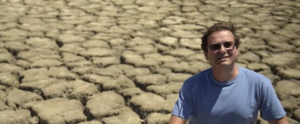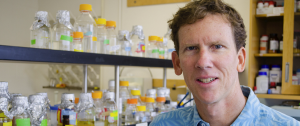Epidemiology & Environmental Toxicology
Selection of Scripps Oceanography & UC San Diego research & resources
Understanding health impacts of climate change
Scripps researchers are dedicated to understanding the relationship between climate change and population health. They aim to understand to what extent air pollution, heat waves, and vector-borne diseases affect population health, to what extent some specific populations and communities are more affected, and what we can do in terms of policies to address those issues. Long-range climate predictions are needed to accurately model future climate scenarios and how they may impact human health. Droughts, heat-waves, cold snaps, wildfires, and water resources can all have drastic impacts on health and society and Scripps researchers study these extreme weather events to better inform public health policies and solutions.
PIs: Tarik Benmarhnia, Sasha Gershunov, Kimberly Prather
Mitigating effects of persistent organic pollutants and influence on human health
Persistent organic pollutants (POPs) have been shown to bioaccumulate up marine food webs and are routinely detected in humans. Understanding how these POPs enter cells and remain there can shed light on how to limit their cellular entry and mitigate harmful effects. Scripps scientists are studying cellular transporters that control the movement of small molecules across the plasma membrane and can limit the uptake of pollutants. Scripps researchers are also working to understand how natural and anthropogenic chemicals gain entry into cells and why some chemicals are more persistent within cells than others.
PIs: Amro Hamdoun, Bradley Moore
Early Detection of Marine Toxins and Pollutants
Environmentally produced toxins as well as manmade pollutants are ubiquitous in the environment and can have adverse effects on human health. Detecting both anthropogenic and natural toxins before they become widespread is paramount to understanding how to mitigate toxic blooms of marine microorganisms. Scripps scientists are studying the biosynthesis of natural toxins for early detection as well as bioaccumulation of anthropogenic pollutants to reduce exposure. Scripps researchers are developing low cost molecular diagnostics to measure contaminants in different media, including water, meat, vegetables, dairy products, breast milk, and other food sources.
PIs: Amro Hamdoun, Bradley Moore
Harmful algal blooms and implications for human health
Harmful algal blooms (HABs) pose a threat to human health through bioaccumulation of toxins in seafood consumed by humans. A recent study led by Scripps scientists, using data from the Scripps Shore Stations Program and a new empirical dynamic modeling method developed at Scripps, has shown that we can now predict HAB events that could not be forecast using traditional ecological modeling methods. The Southern California Ocean Observing System (SCCOOS), based at Scripps, monitors, tracks, and predicts HABs in the Southern California area through data collection. In addition to developing new modeling and prediction tools, Scripps researchers study the ecology of microorganisms that make up HABs to better understand how their growth can be moderated.
PIs: Amro Hamdoun, Bradley Moore, Clarissa Anderson, Peter Franks, Farooq Azam, Brian Palenik, Sarah Giddings, George Sugihara, Lihini Aluwihare
Understanding effects of marine aerosols on human health
Aerosol particles, microscopic bits of dust, soot, and sea spray suspended in air, are the most poorly understood component of Earth’s atmosphere. Without detailed insight on the chemical life-cycle of aerosol particles, it will remain challenging to accurately assess their impact on human-health, cloud formation and precipitation. Scripps researchers use cutting edge technologies, including a wide array of oter gas and particle instruments to perform studies worldwide to better understand the role of aerosols in climate change and human health. Scripps is home to The Center for Aerosol Impacts on Climate and the Environment (CAICE), a National Science Foundation Center for Chemical Innovation. Led by Professor Prather, the center brings together research groups from around the country with the goal of elucidating the chemical complexity and reactivity of atmospheric aerosols. Interdisciplinary teams consisting of chemists, as well as marine biologists, physical oceanographers, and atmospheric scientists, provide insights and new perspectives into how aerosols form and subsequently react.
PIs: Kimberly Prather, Vicki Grassian
Impact of nanomaterials on human health
With the intensification of human activity, aerosols are estimated to have increased by 10-40% since the preindustrial era. Human activities such as biomass burning and incomplete combustion of fossil fuels create an enormous continuous input of particulate matter into the atmosphere. Scripps researchers are studying the impacts of nanomaterials on human health (nanotoxicity), which has received very little scrutiny until now. In collaboration with colleagues in Public Health, Scripps scientists are conducting controlled inhalation studies to help answer questions as to the potential impact of manufactured nanomaterial aerosol on human health. Scripps researchers are also developing methods to measure and evaluate airborne nanoparticle concentrations, characterize nanoparticles and determine the collection efficiency of commonly used respirator filters when challenged with nanoparticles. These studies are expected to assist with assessment methods for nanoparticles in the workplace.
PIs: Kimberly Prather, Vicki Grassian
Work with Scripps
- Access leading scientists in bio-inspired design, algae technologies, and biomimicry
- Design collaborative research
- Get a seat at the table for the latest scientific updates
- Learn how to implement newest expertise & methods
- Work with talented Scripps students and postdocs as potential hires

Dr. Clarissa Anderson, Executive Director
Southern California Ocean Observing System
Scripps Institution of Oceanography

Dr. Tarik Benmarhnia, Assistant Professor
Scripps Institution of Oceanography
Family Medicine & Public Health

Dr. Alexander ‘Sasha’ Gershunov, Research Meteorologist
Scripps Institution of Oceanography

Dr. Vicki Grassian, Distinguished Professor
Scripps Institution of Oceanography, Nanoengineering, & Dept of Chemistry & Biochemistry
Distinguished Chair of Physical Chemistry

Amro Hamdoun, Associate Professor
Scripps Institution of Oceanography

Scripps Institution of Oceanography
Skaggs School of Pharmacy & Pharmaceutical Sciences

Dr. Kimberly Prather, Professor
Scripps Institution of Oceanography
Department of Chemistry & Biochemistry
Distinguished Chair of Atmospheric Chemistry
